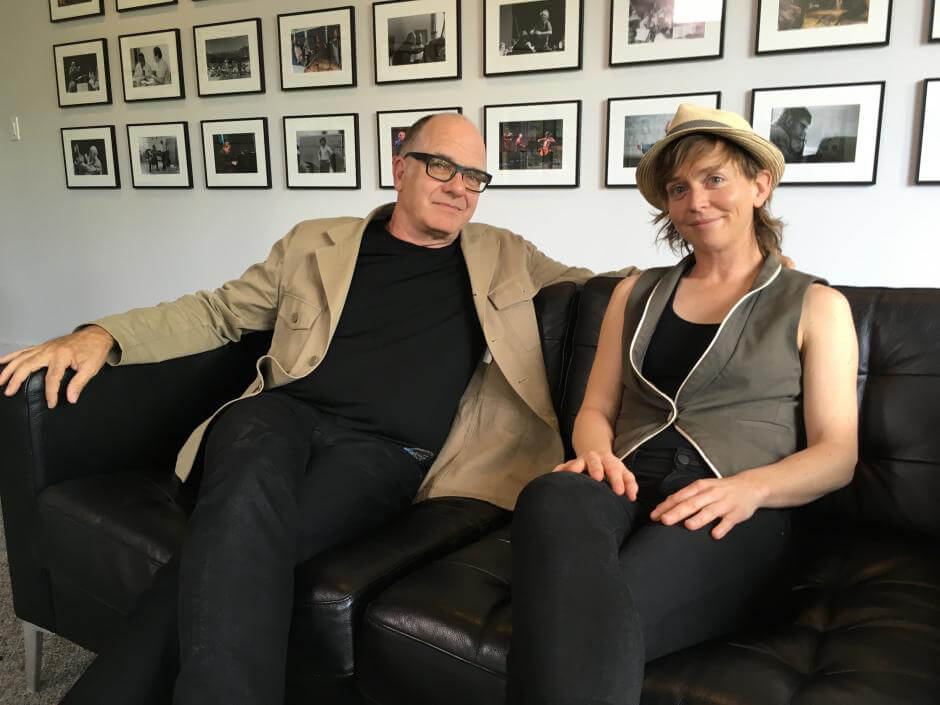
For generations of classical musicians, attending Banff Centre’s music programs has been a rite of passage for the who’s who in Canada, its high altitude a symbol for its position in the arts landscape.
In recent years, it had come to Banff’s attention that a brand makeover was in order, coinciding with the hasty departure of the Centre’s previous CEO. Now with Janice Price secured at the helm since March 2015, Banff Centre invited Musical Toronto to shadow their reinvented Summer Classical Music programs over two and a half weeks from late June to early July.
In my email correspondence with their Media and Communications Officer, Banff expressed appreciation in hosting a correspondent with a “willingness to help Banff Centre reaffirm its place as Canada’s home for training and creation.” I accepted the invitation, while remaining open to reporting on either the success or failure of the venture.
“Throughout the [CEO] recruitment process, I voiced Banff’s need for a new business-strat plan,” Price revealed in an interview on-location. “The brand had gotten quite confused and muddy; it had survived for 30 years but we probably needed a refresh.”
Calling it a “refresh” is putting it lightly. In the hopes of better positioning themselves atop Canada’s cultural pyramid, Banff Centre formed their new strategic plan on six cultural pillars to guide their creative mandate from 2016 to 2021:
- A commitment to advancing artistic learning;
- Banff Centre as a cultural destination;
- A centre of excellence for Indigenous programs;
- A destination for creativity in leadership and conferences;
- A creative home on sacred and protected land;
- An adaptive and resilient organization.
Looking over its components, we can group the plan into two streams:
- Re-equipping Banff to be a mecca for creativity;
- Promoting a forum for all peoples, including Indigenous communities.
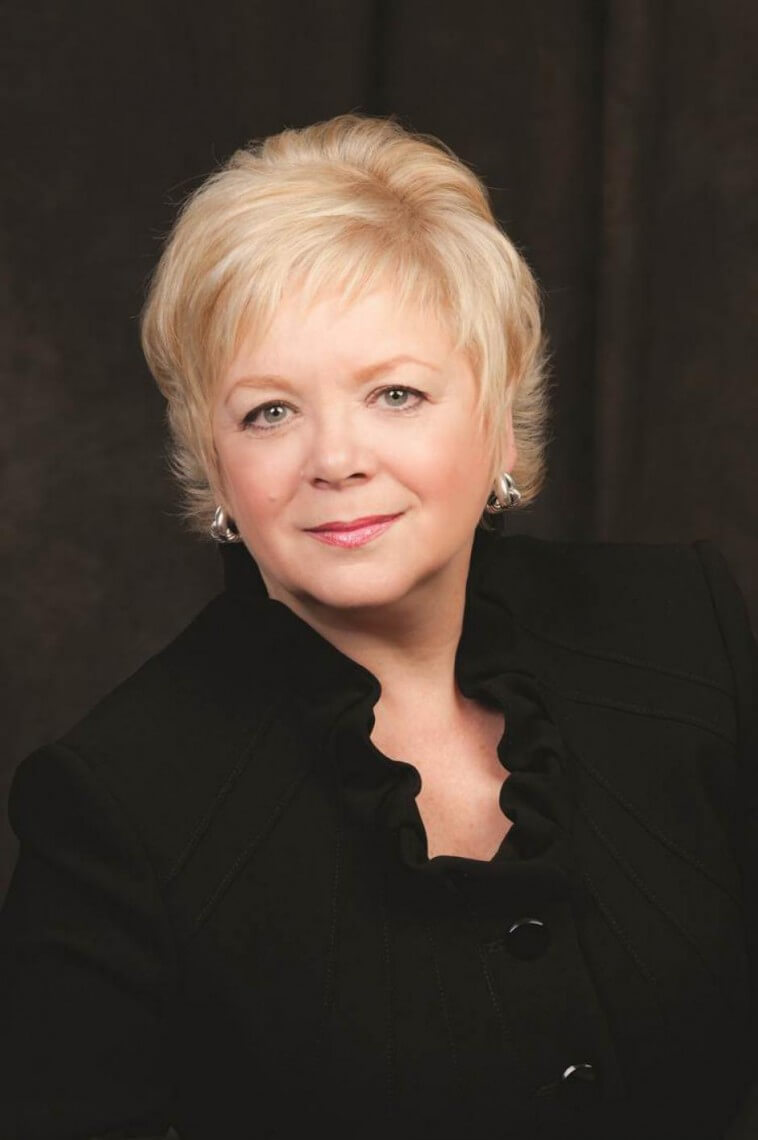
As part of their corporate refresh, Banff Centre dropped the “The” from the head of their name. In music, key executive changes ensued: Claire Chase and Steven Schick were ushered in to succeed Barry Shiffman as Co-Artistic Directors of Summer Classical Music, and classical-centric modules were eliminated in favour of broader programs that reflected a growing contemporary aesthetic to performance.
The rebuild leaves musicians with high hopes for this landmark summer, regardless of their level of enthusiasm for the sweeping changes. Can we declare that Banff is dropping their longstanding association with “classical music” as we know it—a reputation dating from 1936?
“No, not at all. We would never drop the…” Price trails off momentarily.
“We’re preparing musicians for the future, not preparing them to play for music of the past.” Kyle Brenders, Program Manager for Performing Arts, doesn’t mince words in a separate interview. “That’s definitely the musicians that we are attracting: the ones that are looking for a way to move forward, to find a new solution for old-world kind of ideas of how music was made in the 20th century, and how that music is changing. The giant institutions are disappearing: there’s no more record labels, and the sustainability of the orchestra is just not going to exist in the next 25 years. […] If you’re not self-directing as a musician right now, you’re wasting your time. If you’re not driving your own career, nobody is going to do that for you.”
It’s easier said than done to embrace a new view of Banff’s musical legacy. When news surfaced that their summer classical music programs would be eliminated, the reaction was one of collective surprise.
Jamie Kruspe is Assistant Concertmaster of the Canadian Opera Company Orchestra and an alumnus of various summer programs at Banff Centre between 2009 and 2013. He harbours an attachment to his summers in their Chamber Music, Violin Masterclass, and Orchestra sessions: “It always seemed to me that the classical programs were in great shape […] I was shocked when I found out that the programs were being cancelled […] The summer music programs (as far as I could always tell) were regarded as top-tier in Canada. It makes me sad to know that others won’t be able to share my experiences of the Banff Centre the same way I did.”
Justin Min took part in the summer piano masterclasses in 2010, 2012, 2014, and 2015. He, like many, voiced high praise towards Banff’s facilities, faculty, participant playing level, and natural surroundings. But asked to suggest one area of improvement, he mused on the lack of interaction between instrumental disciplines: “At Orford for example, because they have many other music programs going on at the same time, you can spontaneously group up with other instrumentalists and do chamber music for fun. Banff was very solo piano oriented.” While the scaling-down of the piano masterclass enrolment didn’t escape his notice, Min appreciated the increasing sense of community that this fostered over the years. “I think the program had a downwards pattern. I still very [much] liked the smaller program however, as you could get to know everyone.”
Jeanne Amièle attended the piano masterclass program in 2016, the fateful year when participants and faculty alike learned that the 45-year-old program would be shut down. “A lot of teachers, having worked there for many years, felt that the program was more alive than ever, with a growing number of high level applications from students,” she recounted of the reaction on campus. The Québécois pianist appreciated Banff’s broad participant base, a key component of their mandate over the years: “Even though I had had the chance in past years to go to other summer programs in Canada (Orford, Domaine Forget) which have an international faculty, Banff seemed to me like the place to attract the most students from around the world.”
Similarly to Min, Amièle also drew inspiration from the communal experience that develops in a dedicated environment: “Being able to benefit from all these different teachers and watch those masterclasses really enriched my experience.” Even if Banff’s revamp comes at the expense of their stalwart programs, Amièle appreciates the Board’s openness to an artistic refresh. “It’s great to have an opportunity to open to new horizons, but successful and thriving programs such as the piano masterclass should have their place in the evolution of the long term vision for Banff Centre.”
It’s clear that some dwell on Banff’s authority over classical music of days past, while others see this restructuring as the way forward in the field. What’s more, the proponents of the latter group yearn for a stronger spirit of collaboration. Luckily, this is one of the tenets of the co-artistic directors’ vision—more on that later, once we let Janice Price finish her thought.
The CEO recommences from where she left off, “No, [at Banff Centre] we still call it the Summer Classical Music Program.” She conjures up the words of co-artistic director Steven Schick: “When we perform Beethoven, we want it to sound like the ink is still wet on the page, and when we perform new music, we want it to sound like it came from somewhere.” In other words, the new program is about restoring relevance and vitality to the classics, while lending a sense of groundedness to new music. Price continues, “It still requires the discipline, the skills and the training on what we consider to be classical music instruments.”
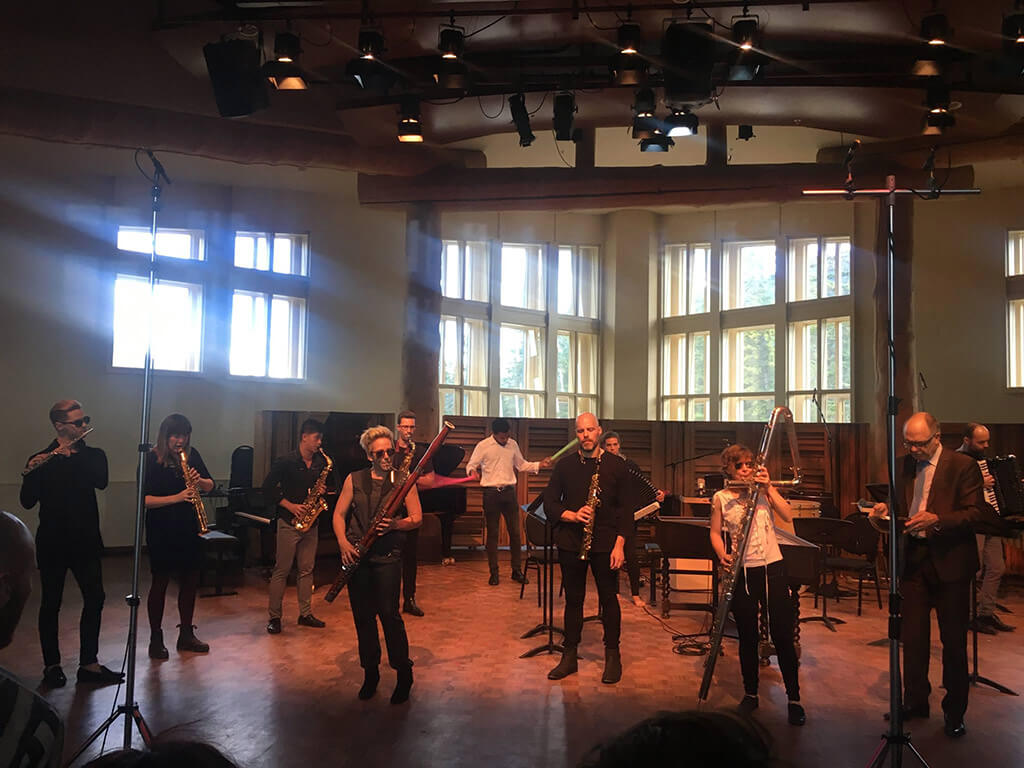
Gone are the conventional streams of piano masterclass, collaborative piano, and violin, to name but a few. Under the new program, participants arrive with these disciplines under their belt, ready to apply them directly to working projects.
In lending programs open-ended names like “Ensemble Evolution” or “Chamber Music” (a familiar name, but with a different aesthetic), Claire Chase and Steven Schick have “unboxed,” Price intones, the previous model from Barry Shiffman’s seven-year artistic directorship. “It’s definitely a significant change from… many years of consistently describing the programs the same way. So it’s… healthy change, I guess, and in any creative organization you have to be open to that kind of healthy change.”
Having held executive positions at The Kimmel Center and Lincoln Center, as well as senior roles at Stratford Festival and Toronto’s Luminato Festival, Hummingbird Centre, and The Corporation of Roy Thomson Hall and Massey Hall, Price arrived at Banff in March 2015 well-tooled from some of North America’s most prestigious arts institutions. We wondered if she looked to paint her experience of the American dream on the Banff landscape: “Well, kind of; more the dual American citizen experience!” Price erupts in laughter.
Price had already been acquainted with Banff’s campus through visits on behalf of Luminato, to check on works commissioned by the Festival. She gained an idea of Banff’s artistic expanse, envisioning a larger platform for her to develop more fully her network of international contacts. She saw it as a right fit, and she parted ways with Luminato on amicable terms.
Why migrate out west, to Banff in particular? For Canada’s arts executive mogul who professes herself to be “very familiar particularly with the arts side of the business,” there were two other factors that drew her here: first, Banff’s 45-plus-year-old legacy in Indigenous leadership training and Indigenous arts; second, to restore Banff’s global reach. “Banff is known better internationally than it is here at home, as too often happens in Canada. Also [from] years of experience running large facilities-based organisations and big performing arts centres, I thought I really brought that international perspective here to Banff, as well as senior executive management skills in the arts and culture field.” By all indications, Price is steadily scaling the crags and crannies of Banff’s top job. “I know it’s a year of change, which can always be challenging for audiences and artists and media alike, but I’m feeling really positive about it. […] When you do what I do for a living, this is THE career-capping job, in my view.”
While Price’s leadership brings stability to Banff, that of her predecessor’s sent Banff Centre veering in the opposite direction. Jeff Melanson’s departure from Banff Centre in April 2014 was abrupt, leaving an ambitious $900 million capital plan in the dust. The event stirred up a media maelstrom into his motivations: various news outlets unearthed questionable personal and (un)professional conduct, including inappropriate relations with a Banff Centre employee. Allegations were made that Melanson retreated to Toronto to get away from his paper trail at Banff. To say nothing of the ensuing Melanson saga in Toronto, it is a gong show from which he has not yet been able to shake free.
Impossible, then, for us not to bring closure to the subject with Janice Price before diving into Banff’s new trajectory. Was it difficult for her to pick up the pieces to Melanson’s unfinished tenure? And the 900 million dollar question: was there red tape to clear up when the plans to build a new theatre downtown were ditched?
“With respect to donations, that project had no funds raised towards it at the time of his departure. It was very much a dream, an idea of a project.” Price also pointed out that she had elected for a conservative approach in her first year on the job, which would help stabilise the Centre’s finances. On top of that, her arrival coincided with the start of a province-wide recession: “I quickly put [plans for new buildings] to rest and said, ‘I think our priority should be stewarding and maintaining and renovating the existing buildings we have.’”
“There were no specific donations that he was responsible for above and beyond the normal course of fundraising responsibilities of any president,” Price moves to close the subject. “We don’t feel any residual questions when I go out to meet with donors or arts partners or whomever I meet with in the marketplace. The notion of ‘Is Banff Centre stable and solid and under good management’ seems to be firmly established at this point in time.”
In April 2016, Banff Centre further streamlined its resources through the elimination of 33 positions from its workforce, amounting to 8 percent of staff and one of its largest layoffs in history.
Financial house in order, check. Dedicated CEO, check. Upon this bedrock, Price was ready to take Banff’s music program in new artistic directions for 2017. Enter Claire Chase and Steven Schick:
“We come from the practices that we’ve developed, which I think are naturally different from our predecessors. But I think our goal is not to break the line, but to extend it.”
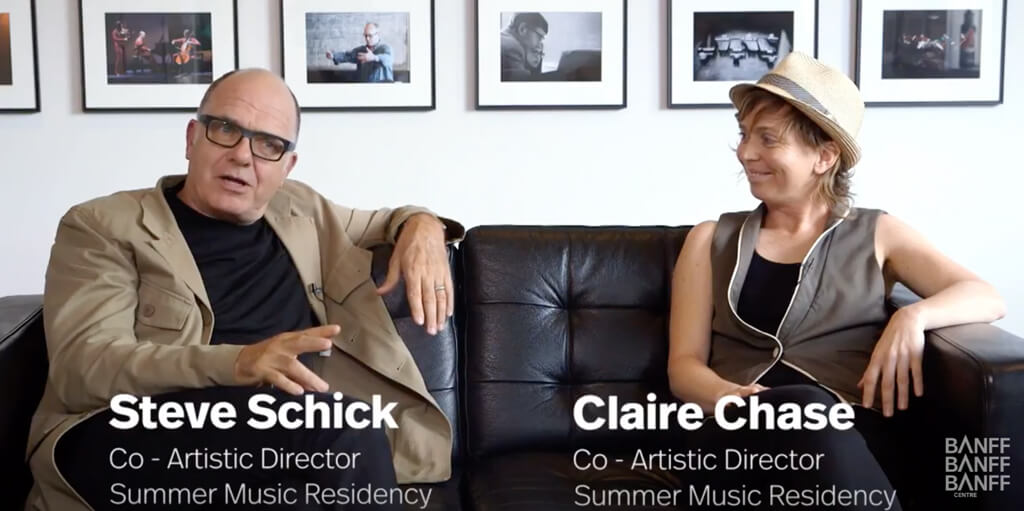
Their co-artistic director partnership unites the highest achievements that today’s cultural entrepreneur could aspire for: a MacArthur Fellow, an Avery Fisher Prize winner, a former music director of the Ojai Festival, key members of America’s International Contemporary Ensemble (ICE)—and an extensive list of associated musical contacts, from which nearly all of this year’s Summer Classical Music faculty were drawn—all within 60-plus years of professional activity between them in the contemporary medium.
Despite their credentials, their names may not be known to Canadians in the classical music circuit. On our side of the border, contemporary music is considerably less accessed than is classical music as it is. But this year at Banff, Chase and Schick looked to kick the tried, tested and true model into high gear under the premise of ARC (Create, Refine, and Amplify read backwards). At this level, it’s no longer a question of technical proficiency: it’s about drawing out inspired—“energised,” they interject—collaborations with like-minded creative types.
Gone is the image of a musician stuck in a relentless cycle of musical isolation, shuffling between a solitary practice room and their teacher’s studio, with a singular vision to polish a limited set of pieces. In Chase’s view, such a conservatory-style approach doesn’t hold its place here, and the alternative they bring is, admittedly, “a departure from the way things were done in the past [at Banff]. […] We love pushing against parameters,” Chase enthuses, “that’s part of the creative process, and we’re improvising with it.” To which Schick points out, “An intelligent limitation is what’s necessary for the energy to go someplace.”
A problem endemic to classical music is its boxed nature, making it out-of-reach to those without extensive musical training. Schick notes that in ancient times, music was a universal means to attain moral behavior, not as a rubric to judge one’s proficiency in a narrow subject area. “At a certain point, it was transformed into the establishment of a set of skills. But historically, that’s a blip. That’s a hundred years in a tradition of millennia.” It’s a more global view of the role that music ought to hold in society; if anything, to restore a bit of faith in humanity.
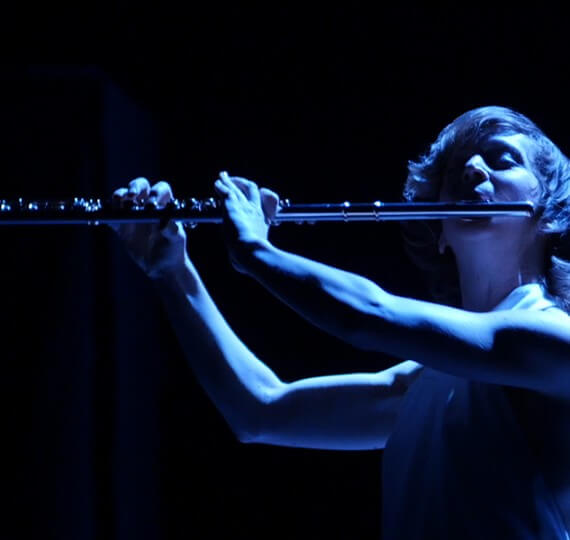
Now at Banff, Chase and Schick have wiped the slate clean, and they have graciously (and daringly) granted the participants free rein in their artistic decisions. “The way I’ve always taught is always to get the most interesting people I know,” Schick speaks to developing creative freedom in the next generation. “I’ve proudly never instructed anybody in my entire life. We sit and I say, ‘What are you going to do?’ Sometimes the fear of going into an environment in which you are asked to create the architecture of your own work means that there is a bit of a paralysis in students. But when they understand that, ‘Oh, what I do is really up to me,’ it’s an extraordinary moment. Our role is to catalyse the process, rather than create it for them—in fact, people will then rise to this level.”
When it comes to musical collaborations, everybody is an active player, from the top down: in this ball game, Schick explains that faculty have as much to gain—or lose—as the students. “This is really what we care about: if we have equal points of investment, responsibility, moments of risk with the participants, then we are really energising the system. […] I think what will make sense to people is that we have as much at stake as they do.”
“I think of myself as an emerging artist in my mid-60s,” he reflects. “I will learn as much from someone who comes as an undergraduate from Oberlin as the person will learn from me, probably more. In the same way that we don’t declare that music that is 200 years old is more experienced and more worthy than the newest things, we also don’t declare that a musician with that much more experience is more worthy.”
It is this open spirit, more so than concrete instructions, that Chase believes will power the working world going forward. “I’m hoping that on a more practical level, that new collaborations, collectives, ensembles, programming ideas are hatched here and live far beyond. It’s not just about people becoming better musicians over the next two weeks. It’s so much wider than that: it’s about all the things they will do when they leave here with each other. Because they need each other.”
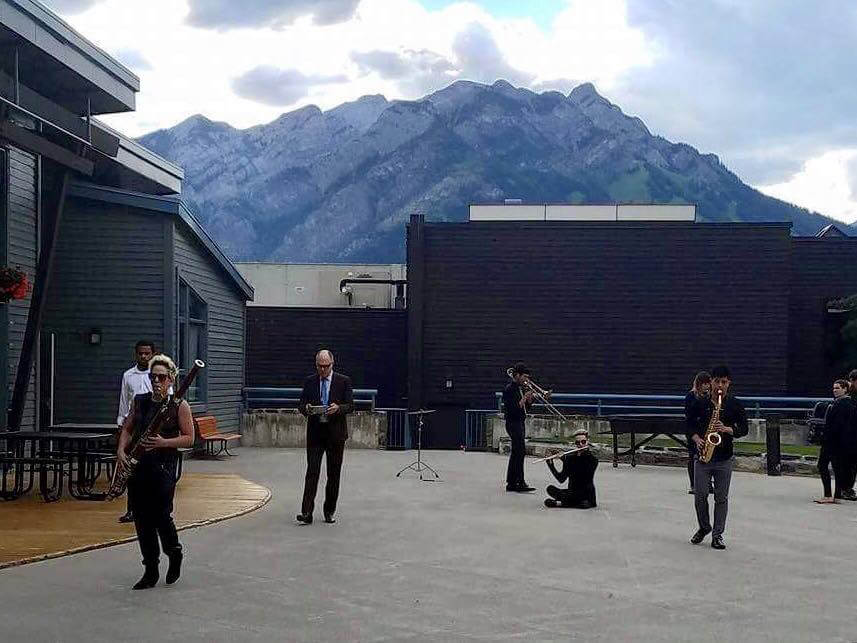
Generally, the ARC participants radiated an infectious passion for the quirks of modern music, and they did well to embody the collaborative spirit of the program. Among them numbered well-balanced numbers of clarinetists, flutists, bassoonists, composers, violinists, violists, cellists, bassists, saxophonists, percussionists, horn and trumpet players, two pianists, two accordionists, a trombonist, and a conductor, totaling 37 Evolution Ensemble participants and 36 in Chamber Music. In their hands, Banff became a hotbed for musical experimentation with infinite combinations: eclectic instruments, extended playing techniques, and the magic of sound technology—ICE’s live sound engineers enhanced performances with sound effects, add another contemporary touch to the Banff programs.
Faculty and participants alike were active players in creating a sense of a welcoming community, outside as much as inside the music building. A typical day comprised a pre-breakfast group hike up Tunnel Mountain, a daily pre-lunch participant meeting, and afternoons to rehearse in groups and for coachings. Participants, mentors and guests worked together towards each week’s four to five performances, and the mingling continued at mealtimes and at Maclab Bistro. At any point, no matter how crazy your ideas, it was all up for discussion—and plenty of good laughs. With an attitude of “come as you are,” I didn’t sense there was any room for judgment; big ideas and fun-loving personalities were the order of the day, every day.
The daily group meetings covered a mixed bag of topics—discussing the previous night’s mainstage performance, seminars on music business, musician health and tech demonstrations, presentations from by name brand artists like Vijay Iyer or JACK Quartet, the list draws on. Hosts Chase and Schick streamlined the sessions on unflaggingly high spirits and sharp musical acumen.
When it comes to actual music-making in the contemporary sphere, Chase and Schick boiled it down to the art of non-verbal communication. Workshopping with and observing participants, it was all in restoring spontaneity and fun to the process, as if ideas came to musicians in the heat of the moment. The spectacle was aural as much as it was visual: performers blended physically into their instruments and the atmosphere; at times, the chemistry was hair-raising. Performances were larger than life, sounds that defy classification were conjured up, no two pitches were imitable. Charged with urgency and intent, the music jumped out of the score. With this emphasis on effect more than individual polish, it is the performers that drive the music, as opposed to the music informing the musicians of a proficient, professional presentation.
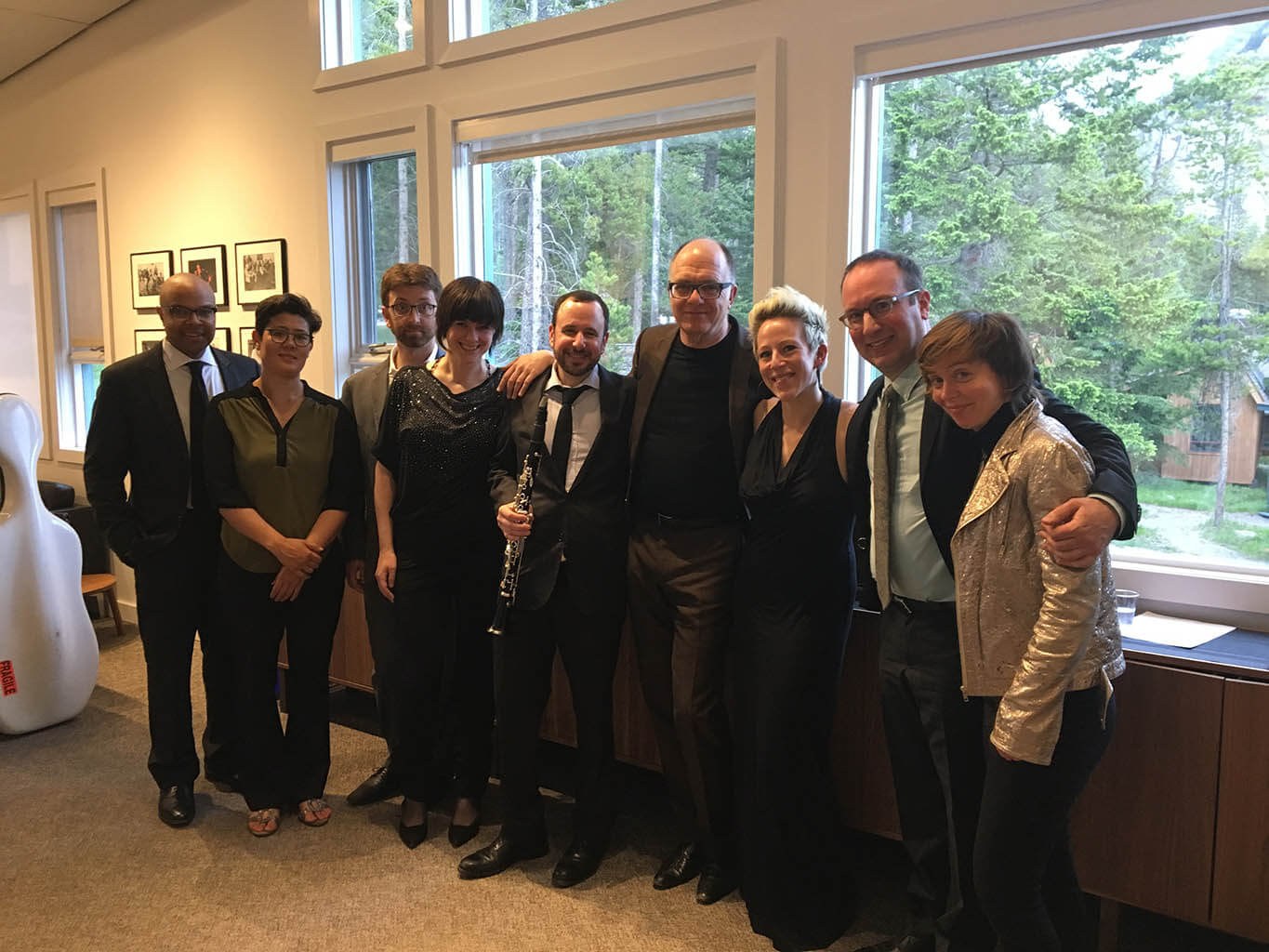
To tie in their own intricate bonds with the International Contemporary Ensemble, we can affirm that Claire Chase and Steven Schick have effectively put the concept of stoic, studied playing on ICE. Many memorable moments were created, in participant coachings as much as in performances. In one particular concert, ICE juxtaposed the Beethoven Septet in E-flat with George Lewis’s Born Obbligato in a presentation that flipped back and forth between the works’ disjunct movements, hopping freely from classical to blatantly contemporary at blazing speed—perhaps a jarring proposition for the longtime Banff audience, many of whom were of retirement age.
To subject an ICE performance to a conventional classical music review would be missing the point of their artistic philosophy completely, when heir aesthetic evades the weightiness of words that attempt to qualify what they do.
Classicists would bemoan the lack of harmonic grounding in their performances, most poignant at cadential meeting points between the instruments. Ditto for harmonic sequences, which ICE interpreted more melodically, yielding a remarkably carefree version of Beethoven (read: Mozartian elegance).
The programme’s forward reads: “So here’s our pledge: we’ll perform traditional music as though it were brand new, […] as though everything were still staked on freshness and daring.” In their hands, music has become a spontaneous feeling experience first and foremost; carnal and uncomfortable emotions are to be expected. If anything, ICE has shown us the art of living in the moment, unapologetically.
Meanwhile, elsewhere on campus, participants in the Open Space: Opera in the 21st Century program were preparing two major presentations: a semi-staged performance of piano-vocal works titled Chamber Werx, as well as the highly-anticipated modern adaptation of Claude Vivier’s chamber opera, Kopernikus (reviewed by Musical Toronto here).
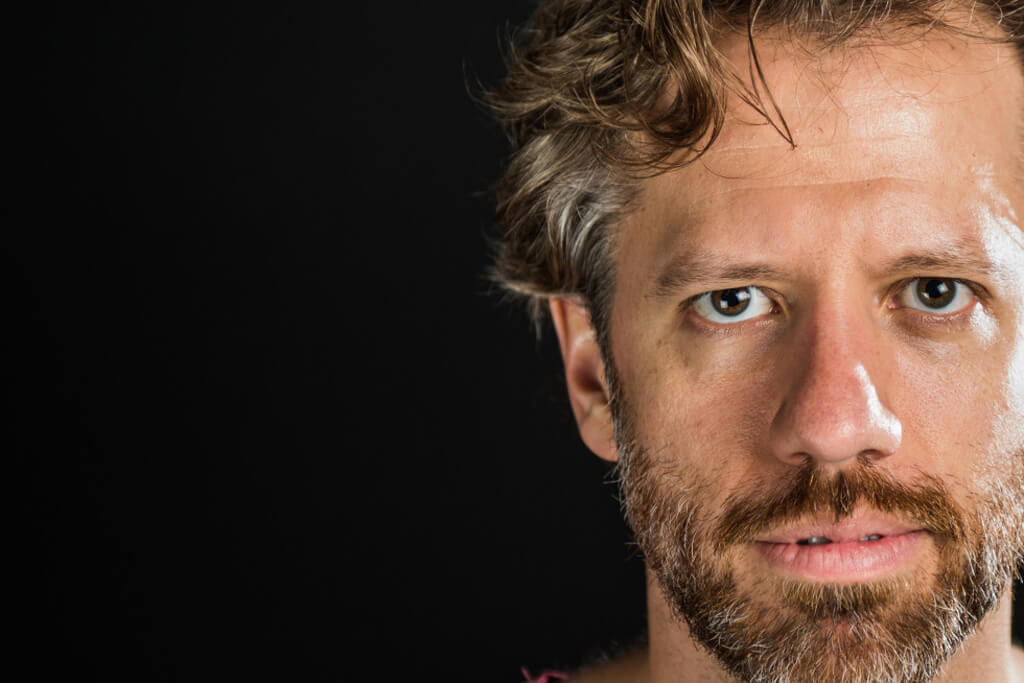
In contrast to the modules led by Claire Chase and Steven Schick, Open Space director Joel Ivany had elected to stay more on the path for classical music, embellishing upon a framework that was still rooted in a cohesive tradition. In Chamber Werx, performances revolved around standard art songs by such composers as Mahler, Strauss and Schubert, alternating with emotionally-charged performances that could well have been transferred to conventional concert halls. For all the psychedelic lighting, the sandwich meat and cutlery flung in the audience’s direction, and the standing room layout, audience engagement was an organic buildup—inner calm was imperative to access their probing mood as well as one’s inner reaction to the piece. Only then could cohesion be struck between disparate surface elements. Though abstract in presentation, these comprehensive productions proved unsettling for the soul, time and time again.
Suddenly, it became obvious that music is at a disadvantage when it comes to holding audience attention, next to a presentation with visual engagement.
Returning to the world of Chase and Schick, their carefree approach was a bit of a jolt to settle back into. A performance of a Boismortier sonata featuring Chase on flute and violinist Aisslinn Nosky left the artists exposed—not for artistic vulnerability, but owing to unfamiliarity with the score. Fast notes came off as skittish, verging on frantic, with passages being glossed over. Synchronisation between the duo was also amiss. No matter to the ARC participants, who still showed their support for their mentors through hearty applause—a group-endorsed A for effort.
A one-off performance in a busy schedule for both, that’s for certain. But on a broader scale for the summer, what of participants who just aren’t able to tap into their creative spirits? Will they be outcast by the program’s relentless creative flow?
“No! Everybody has been so on board and so committed,” Chase dismisses the notion of straggler students. “This is why the side-by-side approach is part of the design of the summer,” as she highlights joint performances with students by faculty members, including by Vijay Iyer in Rite of Spring, followed by mentor-student collaborations in the Chamber Music program with faculty such as Nosky. “That’s life-changing for these kids, and it’s also tremendously generous on her part. But she wanted to do that.”
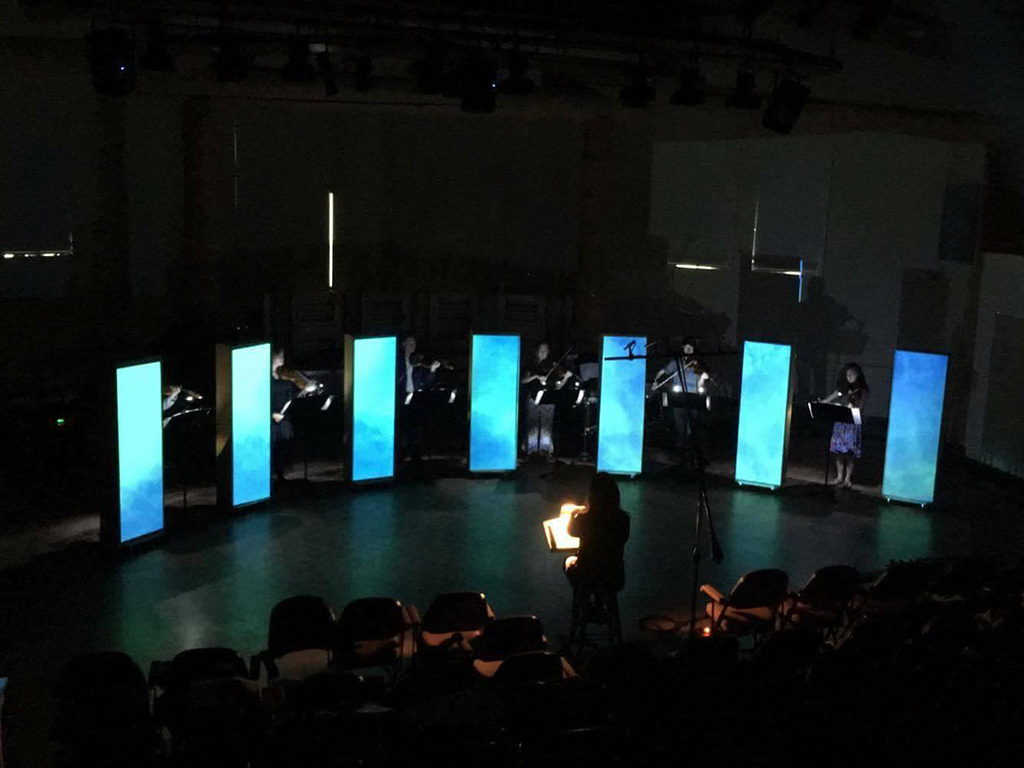
Sure, there are issues endemic to music programs, even at Banff: “The only time I have felt like I’ve had to get on anybody’s case was about preparedness, or not showing up for other people’s concerts, coachings, rehearsals.” Chase is a big advocate for asking questions and being generous—a willingness to engage as a collaborator and citizen. “That’s the thing we insist on […] it’s infectious, so much more than the toxic, competitive energy that can permeate a lot of summer programs and festivals.”
Along the same vein of cross-disciplinary collaboration, Banff Centre is equally intent on advancing Indigeneity across communities. We will elaborate on what that means for Canada in the next instalment to our Banff report.
Head to Part Two of our BANFF summer, where we drop our final verdict on Banff Centre’s new directions.
For more CLASSICAL MUSIC NEWS, visit HERE.
- LISZTS | 10 Reasons To Miss A Performance - April 24, 2019
- INTERVIEW | Nico Muhly: Opera’s Renaissance Man - November 8, 2018
- INTERVIEW | How An Iranian Musician Has Created A Revolution In Persian Classical Music - October 7, 2018
- LISZTS | 10 Reasons To Miss A Performance - April 24, 2019
- INTERVIEW | Nico Muhly: Opera’s Renaissance Man - November 8, 2018
- INTERVIEW | How An Iranian Musician Has Created A Revolution In Persian Classical Music - October 7, 2018



